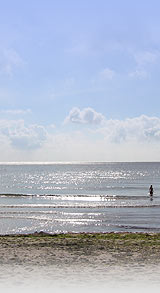The knowledge that we gezegde
Aantal gezegden is 2100216
varav 1407627 på engelska
Gezegde (2100216 st) Zoek
Categoriën (3944 st) Zoek
Auteurs (201357 st) Zoek
Afbeeldingen (4592 st)
Geboren (10498 st)
Gestorven (3319 st)
Datums (9520 st)
Landen (27259 st)
Idiom (4439 st)
Lengths
Toplists (6 st)
Denna sidan visar ordspråk som liknar "The knowledge that we can gain from studying the Amazonian dark earths, found throughout the Amazon River region, not only teaches us how to restore degraded soils, triple crop yields and support a wide array of crops in regions with agriculturally poor soils, but also can lead to technologies to sequester carbon in soil and prevent critical changes in world climate.".
Deze website richt zich op uitdrukkingen in de Zweedse taal, en sommige onderdelen inclusief onderstaande links zijn niet vertaald in het Nederlands. Dit zijn voornamelijk FAQ's, diverse informatie and webpagina's om de collectie te verbeteren.
Barnslighet är både skattebefriat och gratis!
Vad är gezegde?
Hur funkar det?
Vanliga frågor
Om samlingen
Ordspråkshjältar
Hjälp till!
varav 1407627 på engelska
Gezegde (2100216 st) Zoek
Categoriën (3944 st) Zoek
Auteurs (201357 st) Zoek
Afbeeldingen (4592 st)
Geboren (10498 st)
Gestorven (3319 st)
Datums (9520 st)
Landen (27259 st)
Idiom (4439 st)
Lengths
Toplists (6 st)
Denna sidan visar ordspråk som liknar "The knowledge that we can gain from studying the Amazonian dark earths, found throughout the Amazon River region, not only teaches us how to restore degraded soils, triple crop yields and support a wide array of crops in regions with agriculturally poor soils, but also can lead to technologies to sequester carbon in soil and prevent critical changes in world climate.".
Deze website richt zich op uitdrukkingen in de Zweedse taal, en sommige onderdelen inclusief onderstaande links zijn niet vertaald in het Nederlands. Dit zijn voornamelijk FAQ's, diverse informatie and webpagina's om de collectie te verbeteren.
Barnslighet är både skattebefriat och gratis!
Vad är gezegde?
Hur funkar det?
Vanliga frågor
Om samlingen
Ordspråkshjältar
Hjälp till!
 |
Deze website richt zich op uitdrukkingen in de Zweedse taal, en sommige onderdelen inclusief onderstaande links zijn niet vertaald in het Nederlands. Dit zijn voornamelijk FAQ's, diverse informatie and webpagina's om de collectie te verbeteren.
Barnslighet är både skattebefriat och gratis!
Vad är gezegde?
Hur funkar det?
Vanliga frågor
Om samlingen
Ordspråkshjältar
Hjälp till!
 |
